"Taking design ideas of great simplicity and elegance and applying materials and techniques that have never been imagined before. This is what I love." Alexander Lamont
Thailand enjoys a myriad of unique craft traditions from wood carving to silk weaving and nielloware to scarab-wing inlay. Today there are over100 active ceramic workshops in the northern city of Lampang alone! Among all these crafts are a small group of ancient material techniques that produce objects of particular excellence and that are favoured by Royal patronage. One of these is known as 'Yan Lipao' or things made with the vine of the Lipao plant. This vine is very fine and strong, and once woven into exquisite objects, has a delicate texture that exudes the meticulous, patient skill of the (mainly) women who weave it.

Yan lipao coasters
Native to Nakhon Si Thammarat province in Southern Thailand (home of Koh Samui island), the yan lipao fern grows like a vine and the tough fibre has been used for weaving for several centuries. Originally used for quotidian crafts like baskets, trays and fish traps it shifted to more aristocratic use during Thailand’s early Rattanakosin period (1782 - present). The weaving was often enhanced with gold or silver trims and used to make items such as lady's bags, cigarette boxes and betel nut sets. The pain-staking weaving process creates these beautiful items applying the natural dark and light palette of the yan lipao to make contrasting and intricate patterns.
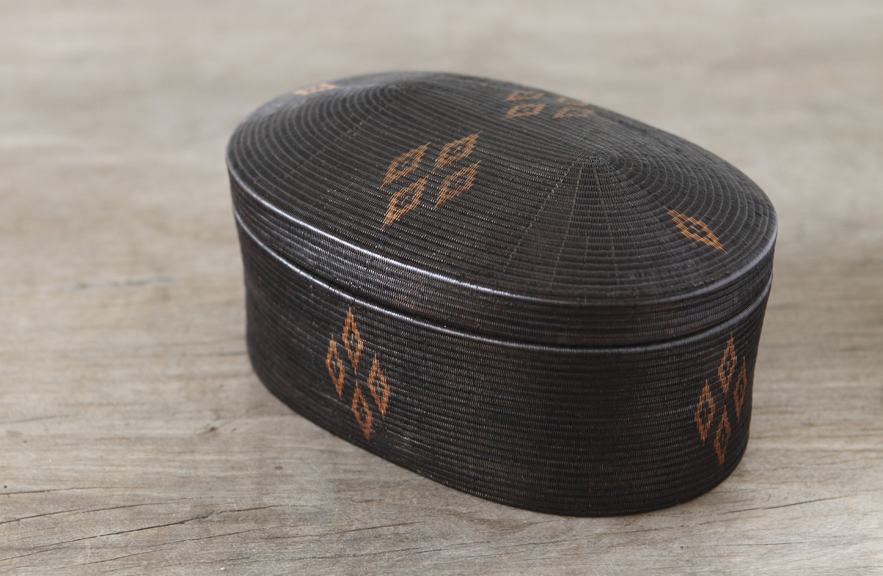
A yan lipao box from Alexander's personal collection.
There are no short cuts when working with yan lipao. Only the longest vines are suitable and each must be carefully selected to avoid imperfections. The husk is removed and then the outer peel is carefully stripped away from the pith in a timely manner; while the vine is still soft and malleable. The vine peel is then dried in the shade and later cut into lengths that are gently pulled through a small hole in a tin plate to create consistently thin strips with a smooth finish. In Thai this is known as the chak liad process. The vine is now ready for weaving as the finished sections are fine, dry and without coarseness. Once the weaving is complete, oil is applied to the finished work to bring out the color and lustre and to protect the fiber.
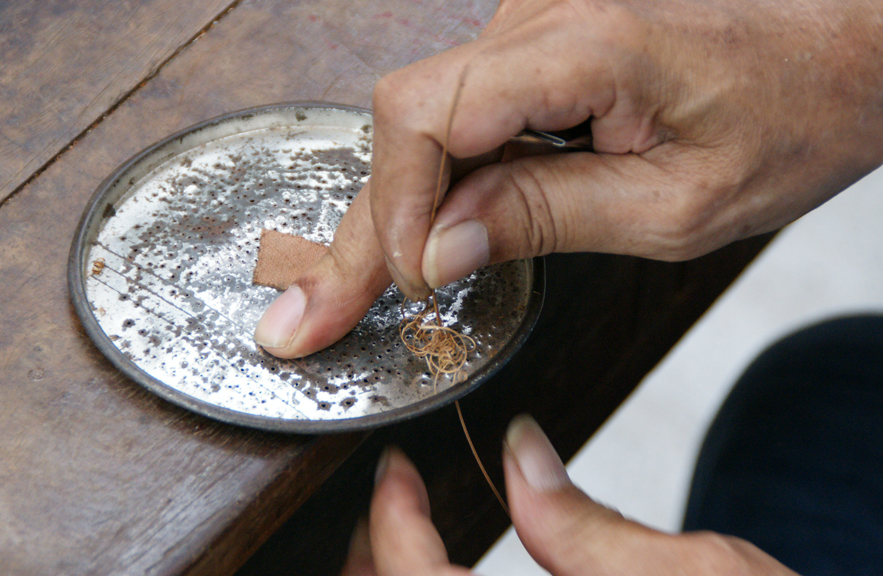
The vine is pulled throught the tin plate several times where it is shaved and smoothed out in preparation for weaving.

Skillfully and methodically the basket takes shape.
Yan lipao baskets have been regularly sold in our shops in Thailand, but it was while working with rock crystal that we saw the design potential to use yan lipao in our new way within our collections - as a finely worked counterbalance to the rich translucence of the crystal with its eloquent inclusions. These two elements are combined in our Virtue Rock Crystal boxes and the new Vitrum Lidded Jars. Each crystal vase is hand-ground using specially made tools before the finished vessels are sent to Nakhon Sri Thammarat for their lids to be made, ensuring a custom fit for every piece. As a design company built around innovative and contemporary work in traditional materials of great beauty, we see the combination of materials as a striking marriage that sits elegantly on vanities or desks. To touch the materials is a sensually gratifying experience; the light, taught, undulatory structure of the woven fibre meeting the cool, glassy weight of the rock crystal.
Virtue Rock Crystal Boxes; part of the Scholar's Gift collection
Vitrum Jar, Large, held by Naomi our ikebana teacher
Never have these materials been combined before, and the result is even more satisfying in the hand than in the eye.
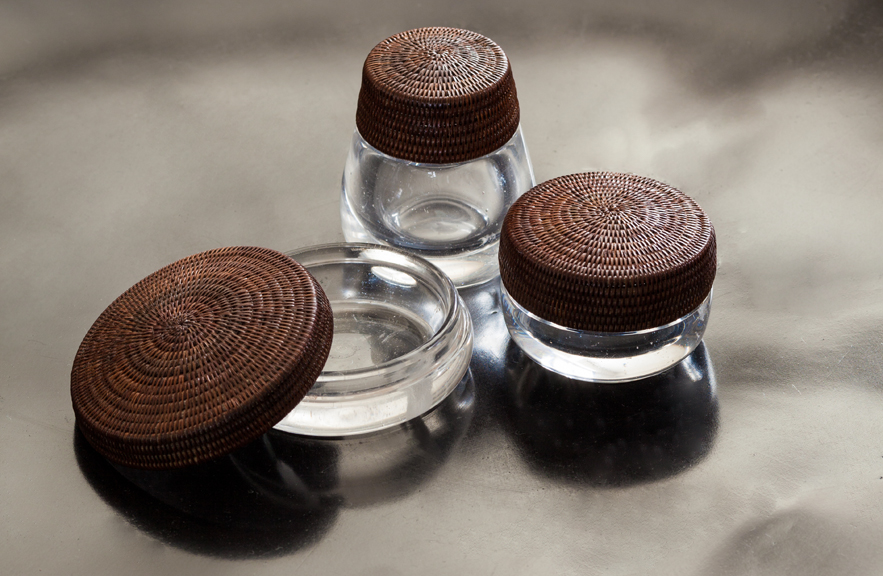
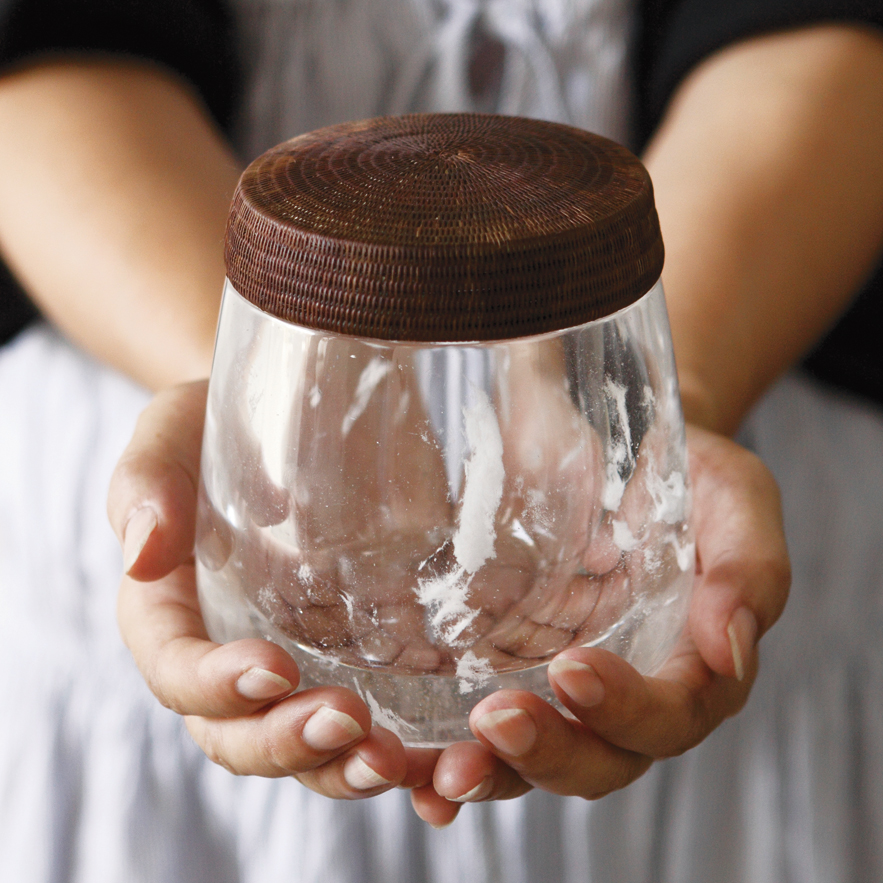

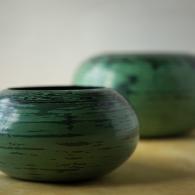
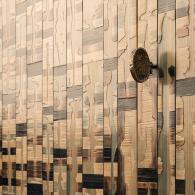
Add new comment